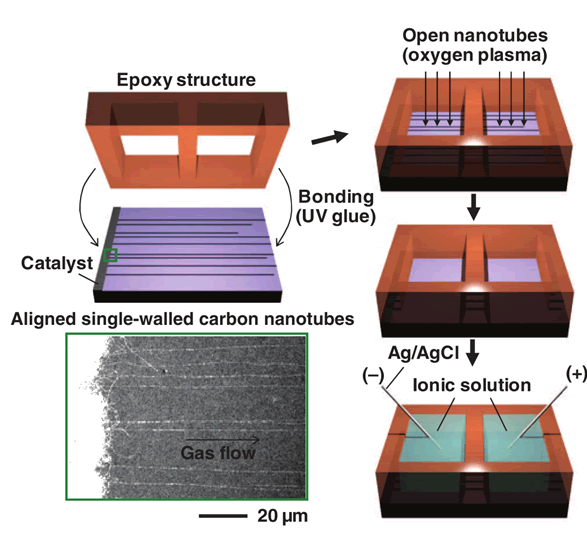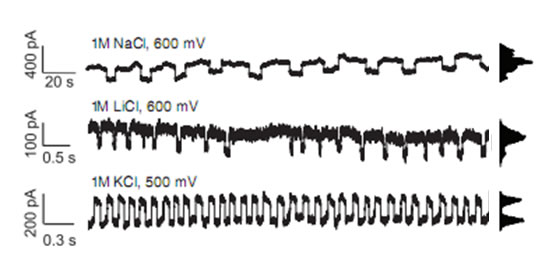By growing and isolating ultra-long (>1 cm) SWNT, we have been able to form the longest, highest-aspect ratio nanopores ever achieved. With unbroken, persistent interior diameters between 1 and 2 nm, these pores allow us to study transport phenomena on an unprecedented scale.
A recent highlight in Nature Reviews Chemistry, about our work on phase transitions of water inside SWNTs, published in Nature Nanotechnology can be found HERE.
Using Raman spectroscopy we characterize the pore diameter to within an angstrom prior to forming a device by bonding a polymer barrier across the SWNT to demarcate two reservoirs. We then immerse the channel in aqueous salt solution and apply a bias between the reservoirs, driving an electro-osmotic current via proton conduction. As salt ions enter the channel, they attenuate proton transport, ‘blocking’ the pore via a coulter mechanism and reducing the measured current by a fixed blockade current until they leave after some dwell time. By measuring the blockade current and dwell time for different salts, we have been able to elucidate transport behaviors.


References:
CY Lee, W Choi, J-H Han, MS Strano Science 329 (5997) 2010
W Choi, CY Lee, MH Ham, S Shimizu, MS Strano J. Am. Chem. Soc. 133 (2) 2011